MTP Solutions for High-Density Needs
With the ever-increasing demands for high-density backbone cabling. MTP solutions have enjoyed widespread popularity. In this post, we will have an exploration of two MTP solutions: MTP cable and MTP cassette. For those who are unfamiliar with this term, it’s necessary for us to get started from its basics.
Background Information on MTP
In this part, you are required to acquire three terms: MTP, MPO, and polarity.
MPO stands for “multi-fiber push on” connector. Usually, it refers to a type of a multiple fiber core connector, defined by IEC-61754-7 (
MTP is
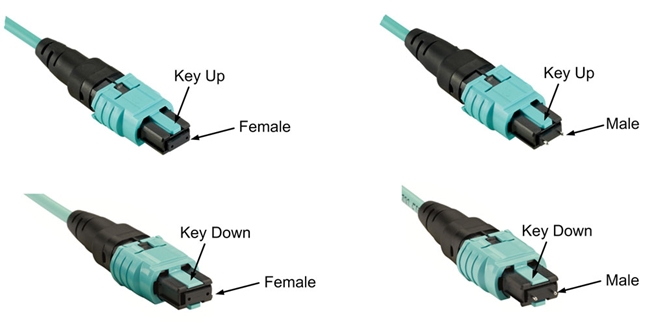
Figure 1: MTP Connectors
Also, there are guide grooves (keys) on the top side of the factory terminated MTP/MPO connectors, which ensure that the adapter holds the connector with the correct ends aligned with each other. According to the key, the MTP/MPO connector come with two types. One is “key-up to key-down”, which means the key is

Figure 2: MTP Connector Structure
In any installation, it is important to ensure that the optical transmitter at one end is connected to the optical receiver at the other. This matching of the transmitting signal (Tx) to the receiving equipment (Rx) at both ends of the fiber optic link is referred to as polarity.
MTP Solutions
For MTP-based solutions, there are two frequently used applications: MTP cable and MTP cassettes. They are the best choices for providing a simple, cost-effective, and structured cabling system.

Figure 3: MTP Solutions
MTP cables usually consist of the MTP connectors and the fiber optic cables. Sometimes, the LC connectors are used, which we will expound in the following part. As for fiber cables, they are typically used in OS2, OM3 or OM4. With different applications, the MTP cable can be classified into MTP trunk cable and MTP harness cable.
Serving as a permanent link, the trunk cable is designed to connect MTP modules to each other. It’s available in 12, 24, 48 and 72 fibers. For the ends, the cable is commonly found to be terminated with 12-fiber or 24-fiber MTP connectors. When it comes with the polarity of the patch cord, there are three different types (type A, B, and C), which is defined in the TIA standard. In the following figures, the three different connectivity methods for 12-fiber and 24-fiber MTP trunk cable are showed respectively.
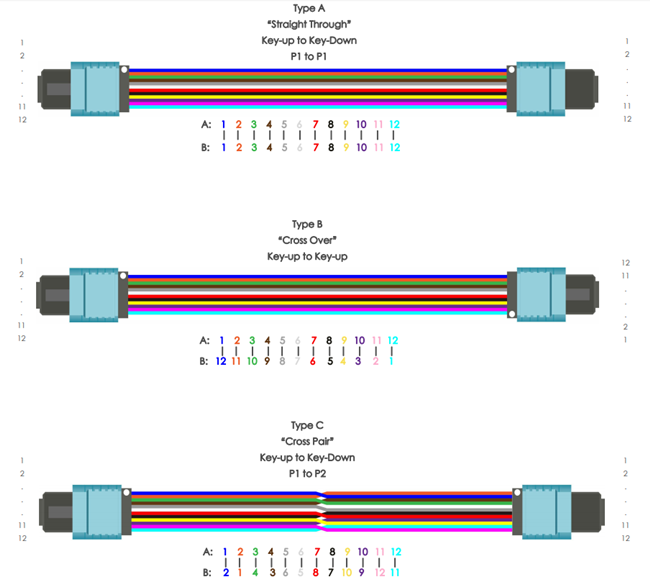
Figure 4: 12-Fiber MTP Trunk Cable
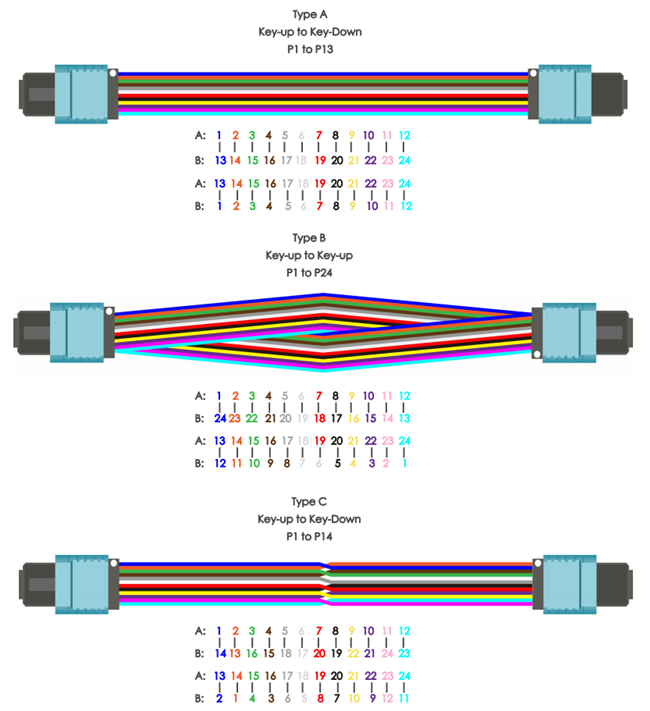
Figure 5: 24-Fiber MTP Trunk Cable
MTP harness cable is used to provide a transition from
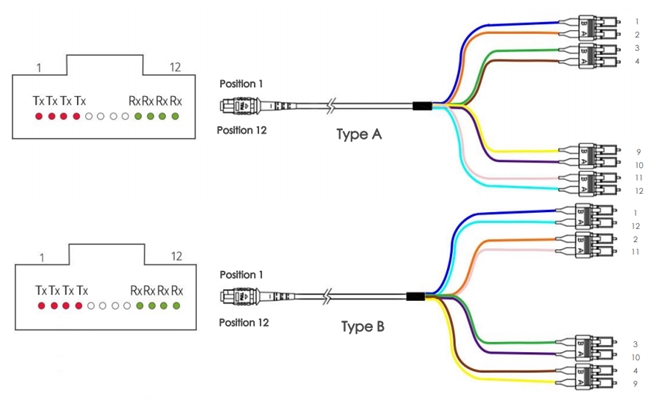
Figure 6: 12-Fiber MTP Harness Cable
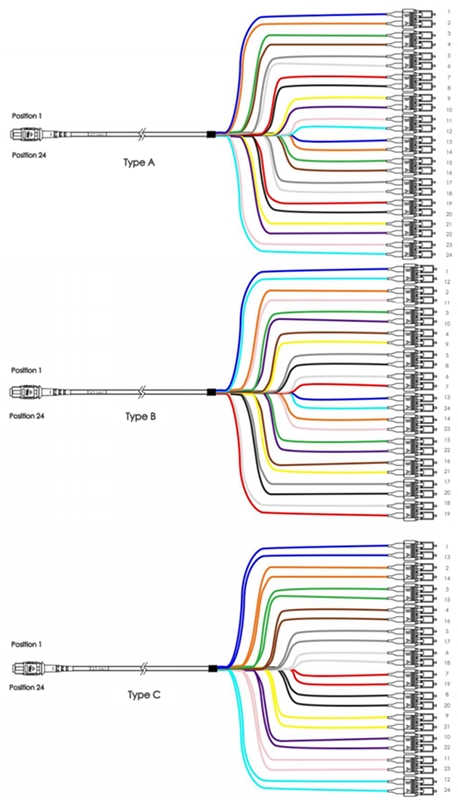
Figure 7: 24-Fiber MTP Harness Cable
MTP-cassette is a kind of pre-terminated cassette module. It enables the “transition” from ribbon cables terminated with MTP connectors to the LC or SC interface on the transceiver terminal equipment. Conventionally, the MTP cassette is loaded with 8, 12 or 24 fibers and have LC or SC adapters on the front side and MTP at the rear. Nowadays, the three most widely used cassettes are MTP-8, MTP-12, and MTP-24 cassettes, or also known as Base-8, Base-12, and Base-24 MTP cassettes. For MTP-8 cassette, it is only available in Type A. While MTP-12 and MTP-24 cassettes both come with Type A and Type AF. For their polarity details, please refer to the following figures.
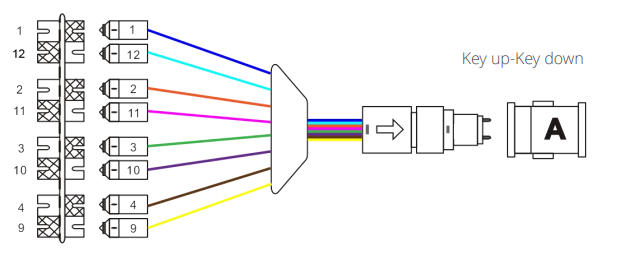
Figure 8: MTP-8 Cassette

Figure 9: MTP-12 Cassette

Figure 10: MTP-24 Cassette
Summary
In this post, we make an overview of MTP, including what the MPO, MTP, and the polarity are. Then we share three types of MTP-based solutions for high-density networking: MTP trunk cable, MTP harness cable, and MTP cassette.